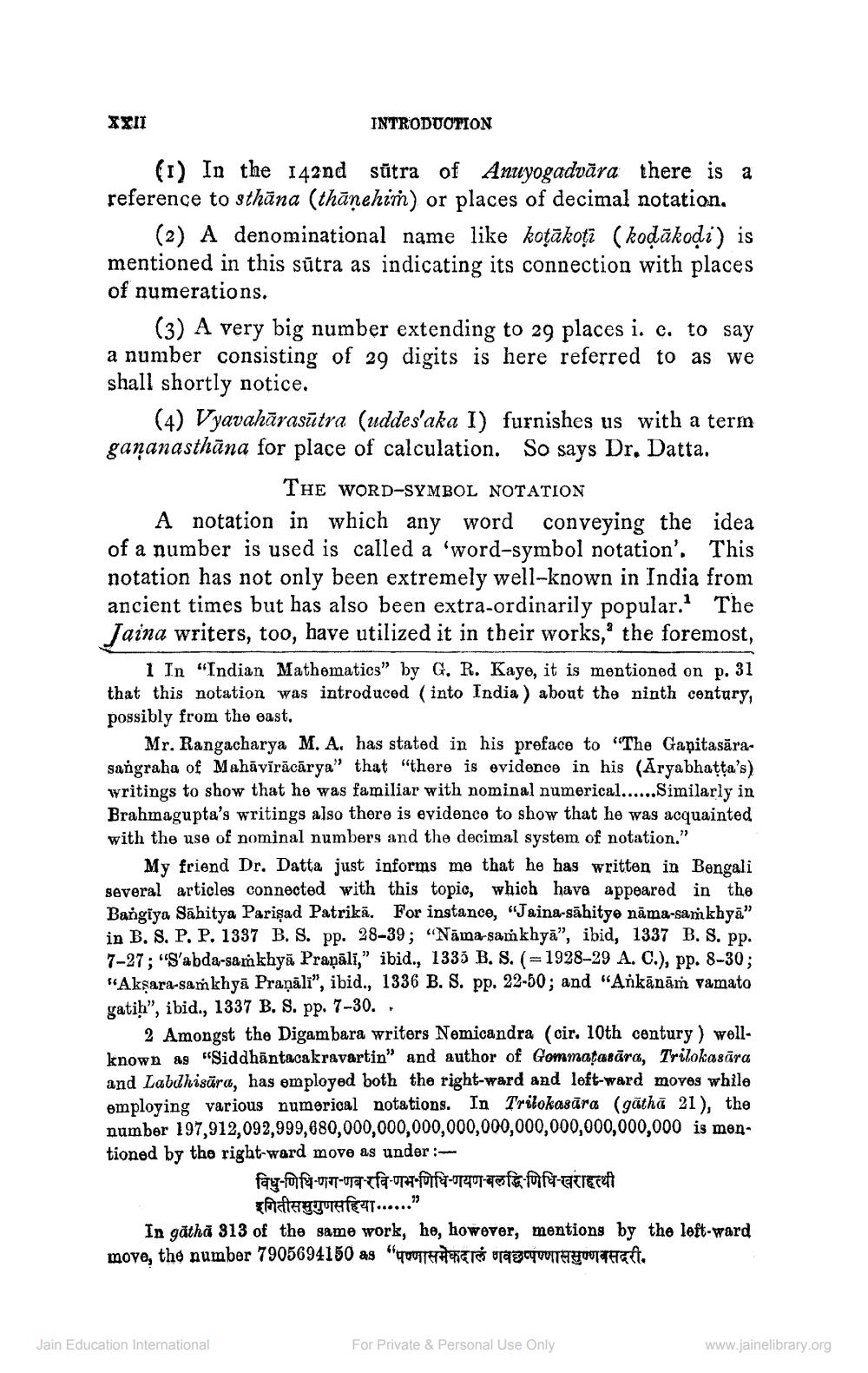________________
INTRODUCTION
(1) In the 142nd sūtra of Anuyogadvāra there is a reference to sthāna (thānehiń) or places of decimal notation
(2) A denominational name like kotākotī (kodākoņi) is mentioned in this sūtra as indicating its connection with places of numerations.
(3) A very big number extending to 29 places i. c. to say a number consisting of 29 digits is here referred to as we shall shortly notice.
(4) Vyavahārasītra (uddes'aka I) furnishes us with a term gananasthāna for place of calculation. So says Dr. Datta.
The WORD-SYMBOL NOTATION A notation in which any word conveying the idea of a number is used is called a 'word-symbol notation'. This notation has not only been extremely well-known in India from ancient times but has also been extra-ordinarily popular. The Jaina writers, too, have utilized it in their works, the foremost,
1 In "Indian Mathematics" by G. R. Kaye, it is mentioned on p. 31 that this notation was introduced into India ) about the ninth century, possibly from the east.
Mr. Rangacharya M. A. has stated in his preface to "The Gapitasära. sangraha of Mahāvīrācārya" that "there is evidence in his (Aryabhatta's) writings to show that he was familiar with nominal numerical...... Similarly in Brahmagupta's writings also there is evidence to show that he was acquainted with the use of nominal numbers and the decimal system of notation."
My friend Dr. Datta just informs me that he has written in Bengali several articles connected with this topic, which have appeared in the Bangiya Sahitya Parişad Patrikā. For instance, “Jaina-sāhityo nāma-samkhyā" in B. S. P. P. 1337 B. S. pp. 28-39; "Nāma-samkhyā”, ibid, 1337 B. S. pp. 7-27; "Sabda-samkhyā Praņāli," ibid., 1335 B, S. (= 1928-29 A. C.), pp. 8-30; "Akşara-samkhyā Praņāli", ibid., 1336 B. S. pp. 22-50; and "Ankānām vamato gatih", ibid., 1337 B. S. pp. 7-30.
2 Amongst the Digambara writers Nemicandra (cir. 10th century) wellknown as "Siddhantacakravartin" and author of Gommatasära, Trilokasára and Labdhisära, has employed both the right-ward and left-ward moves while employing various numerical notations. In Trilokasāra (gäthā 21 ), the number 197,912,092,999,680,000,000,000,000,000,000,000,000,000,000 is mentioned by the right-ward move as under:
विधु-णिधि-णग-णब रवि-गभ-णिधि-णयण-बलद्धि-णिधि-खराहत्थी
MatHuEEST......" In gåtha 313 of the same work, he, however, mentions by the left-ward move, the number 7905694150 as "Quartiers vragcqWITHTHOUTTHETI.
Jain Education International
For Private & Personal Use Only
www.jainelibrary.org




